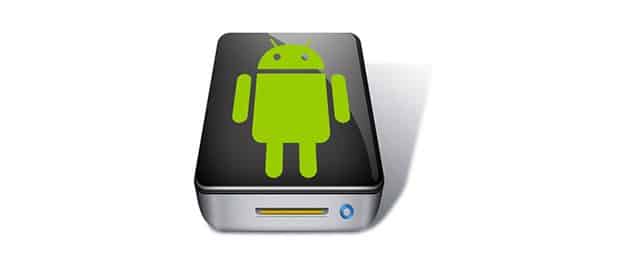You’re probably reading this because you have heard or read about rooting and now you want to know what ‘rooting’ actually means and why you should bother going through the whole rooting process. In this article, I’m going to explain what rooting your Android device means and why it’s so awesome to do it.
What does ‘Rooting an Android device’ actually mean?
So, in a nutshell, rooting an Android phone or tablet means giving yourself ‘root’, or admin rights. This means that you are able to edit system files which, normally, wouldn’t be accessible to normal users. What does that mean? Well, it means that you or other apps that only work on rooted devices, can access and change things like your camera flash, notification light and many other things. You’re basically tearing down the restriction walls of your firmware. It’s similar to jailbreaking an Apple device or changing from a normal user to an administrator on a Windows machine. For a more detailed explanation, also about all the rooting terms, check out our extensive rooting guide.
Does rooting void the warranty?
Let me get that immediately out of the way: Yes, rooting an Android device voids the warranty. That’s a fact. Same thing with jailbreaking an Apple device. But, thankfully, it’s not difficult to “un-root” a device and to flash a stock ROM or a manufacturer supplied ROM onto the phone. After doing that, your device won’t show any sign that it used to be rooted, thus making you eligible for any warranty claims.
Benefits of rooting an Android phone or tablet
Having admin rights opens up many new possibilities to customize your device and improve your Android experience. The following list covers the main advantages of having a rooted device.
Make complete backups of your device
Let’s start off with one of the major benefits of having a rooted device: Better backups. With a rooted device, chances are high that you might want to tweak your system, install a custom ROM or install apps that need root access. Since you’re playing around with your system files, it’s always good to have backups of your apps, user data or your whole system. And, besides, it never hurts to keep backups, in case you delete important files by accident. The most popular app to make backups is Titanium Backup. Although the Pro version costs $6.58, it’s well worth the money. It allows you to make complete backups of all your apps and system data. Restoring them after, for example, a factory reset brings back all your apps and system settings so that you don’t have to bother with installing all of your apps and setting up your device again. Another great benefit is being able to make a backup of your whole system, called ‘Nandroid’ backup. Restoring a Nandroid backup is like restoring your Windows computer to exact state of the last performed system backup. So, if you Android device isn’t working properly anymore or if it’s soft-bricked and doesn’t boot up anymore, restoring a Nandroid backup brings you back to the same state of the moment you created the backup. It’s a great safety net when you decide to flash a custom ROM or Kernel, for example. If anything goes wrong, just use your Nandroid backup to fix your device. Want to know how to make a Nandroid Backup? Check out my guide!
Automate everything
When it comes to automation, Tasker is the one and only app. With Tasker, you can automate just about anything. It also works on non-rooted devices, but with less automation options. It kind of follows the same logic as the online tool If This Then That (IFTTT) but in a much more sophisticated way. For example, you can toggle your WiFi every time you leave or enter your home or turning on Bluetooth and Google Maps when you connect your phone to a car dock. But I’m only scratching the surface here. Check out brandall’s awesome beginner’s guide at XDA Developers to learn more about Tasker.
Track your device even after someone makes a factory reset
Losing your smartphone or tablet is a huge pain in the ass. More so, if someone stole it. There are ways to prevent your phone from being lost or stolen and to track it even without installed anti-theft app, but they are more or less detectable. That means, someone, who stole your device, can simply uninstall any tracking apps or do a factory reset. With root access, however, you are able to flash (install) a tracking app, such as Cerberus, deep into your system. This way, Cerberus will even survive a factory reset. You can even flash a disguised version of the app so that it’s completely hidden in the app drawer.
Use modified versions of Android, called custom ROMs
Custom ROMs are, as the name already implies, customized versions of the Android operating system. They offer unique features and improvements that you don’t get with the default Android OS. The most popular names in the custom ROM world are CyanogenMod, Paranoid Android and AOKP, to name just a few. If you want a better and more user-friendly Android experience, a better performance and battery life, then you should check all the different Custom ROMs and try out the one that suits you best.
Use Xposed Framework to customize your device
Xposed is a framework for many available modules that allow you to customize your Android device’s performance and visual appearance. It’s kind of having many of the features that custom ROMs offer without having to flash one. So, if you don’t feel the need to install a custom ROM and only want a few additional features then installing Xposed modules might be the best option for you. Also, it’s super easy to install and set up. However, Xposed also works flawlessly with a custom ROM.
Increase performance and battery life
With root access, you’re able to change your device’s CPU frequency. Overclocking your CPU will give you a better performing device while underclocking will be good for your battery. Check out the app SetCPU which is available for $1.99 (1,49€) on Google Play. It’s a great app with many features such as creating several CPU profiles which switch automatically based on user-defined conditions.
Say goodbye to ads
Especially on a small screen, ads can be annoying sometimes. If certain apps take it too far with ad serving, then you can simply them by using ad blockers like AdAway. However, keep in mind that most app developers rely on the income from such ads. Without them, many great apps wouldn’t be free or even exist. So please support developers of apps you like to use and don’t just block all ads entirely.
Last words
So, you see, if done correctly, rooting an Android device isn’t risky and it has lots of benefits compared to non-rooted devices. Of course, the stock, or default Android experience is already great but having almost limitless options to customize and tweak the system, you can get a lot more out of your phone or tablet. The points I discussed above only cover a small part of what’s possible, but I hope you got a good idea of the potential of rooting your device. Check out our Android guides on trendblog (see list below) and browse the XDA forum to get more comfortable and start benefiting from all the possibilities a rooted device has to offer. Check out our guides to become a true rooting expert:
How to install Xposed Framework How to root any Nexus device
Are you interested in more Android related guides? Have a look at our Android knowledge database. Δ Contact Us :- trendblog.guest@gmail.com



![]()



